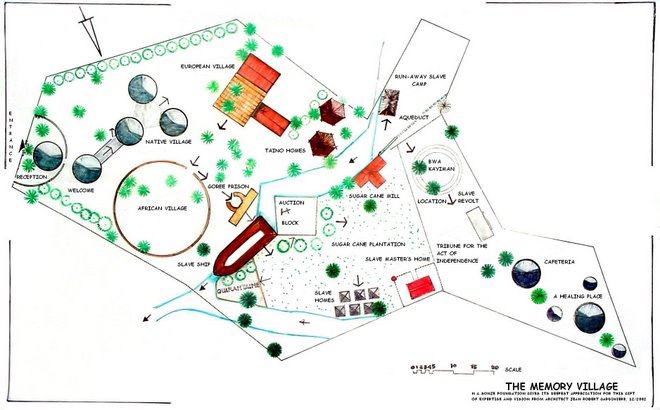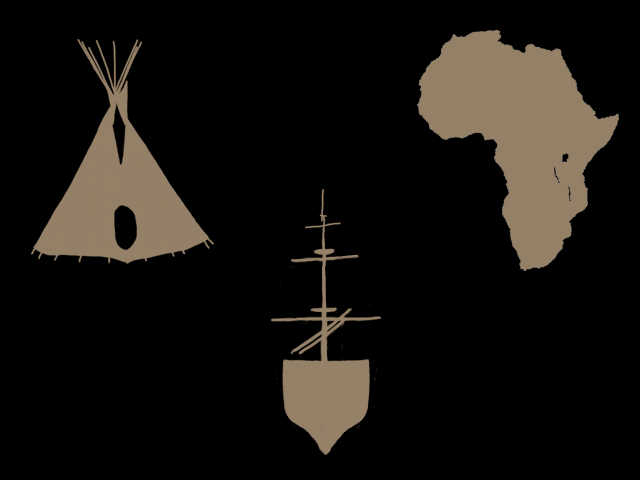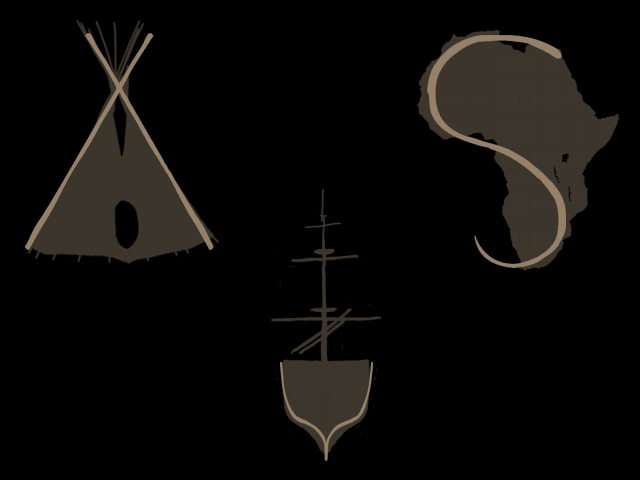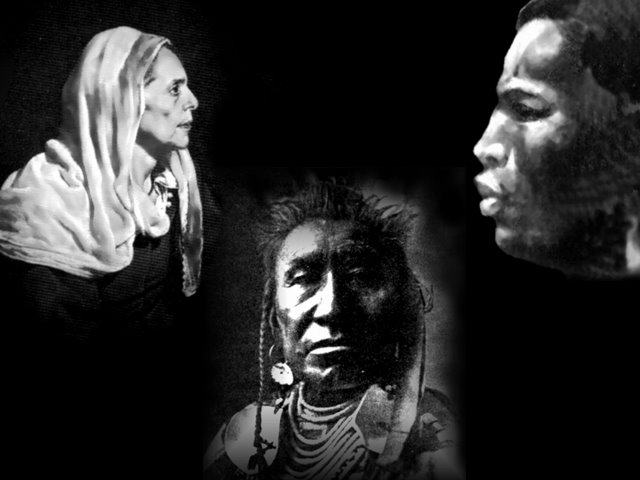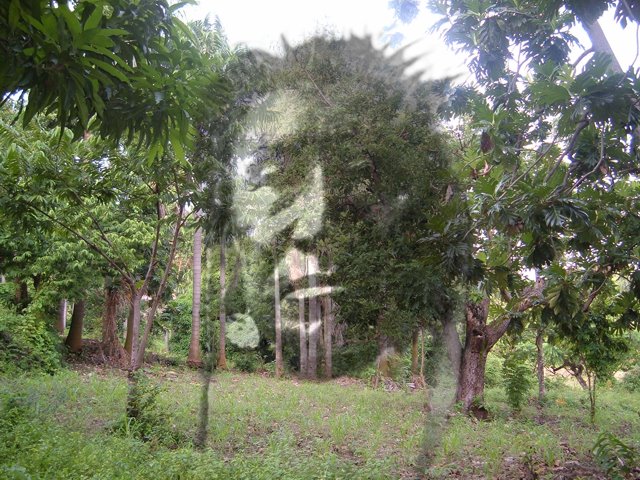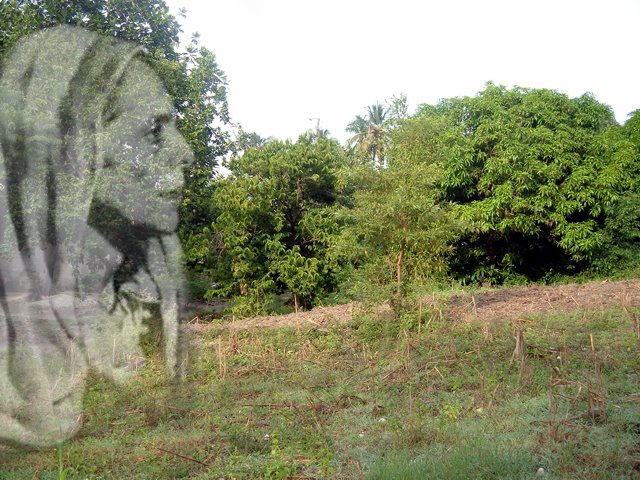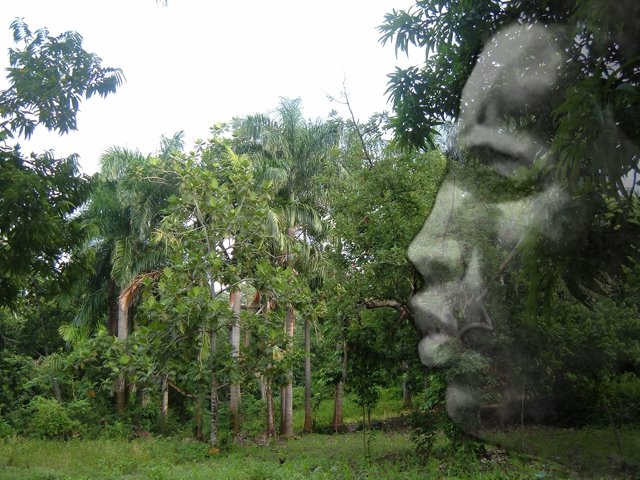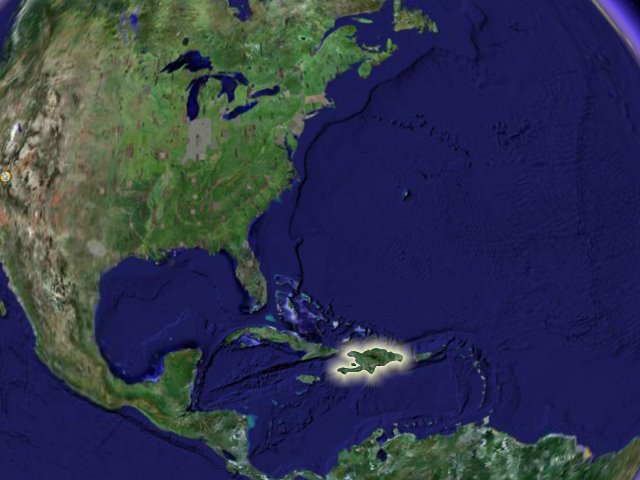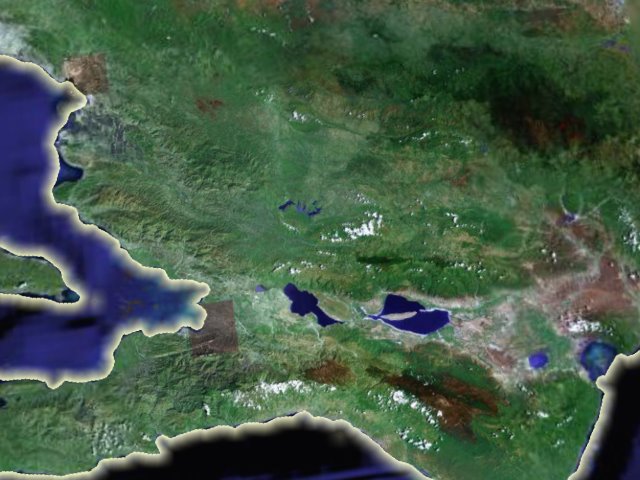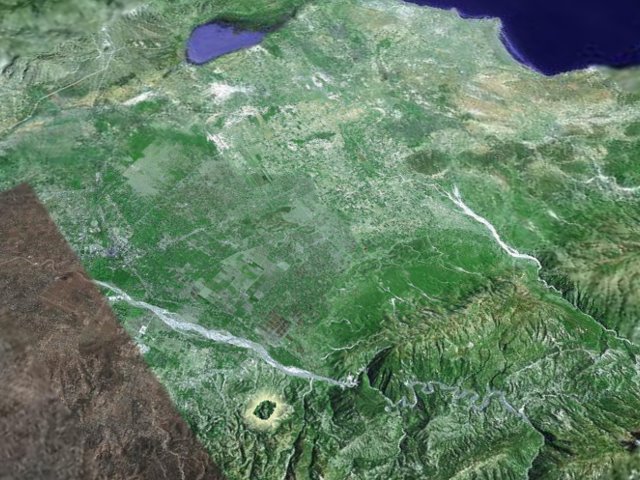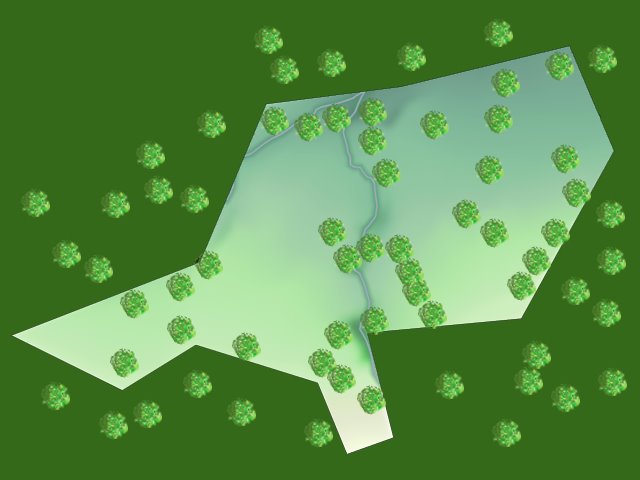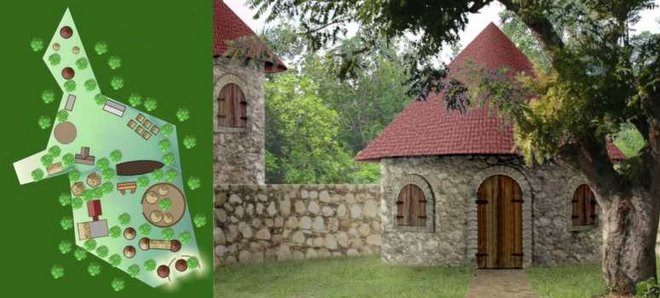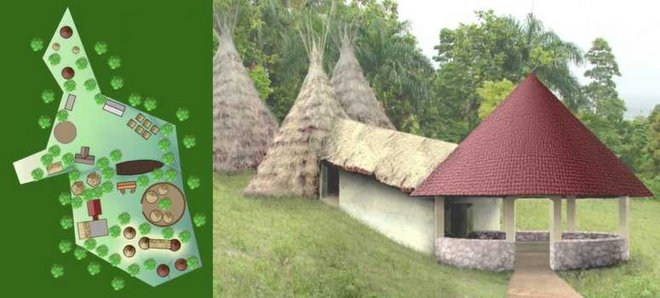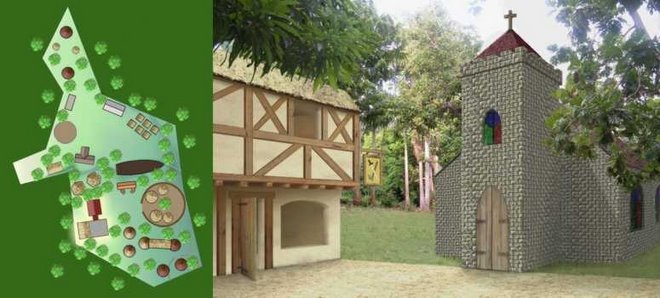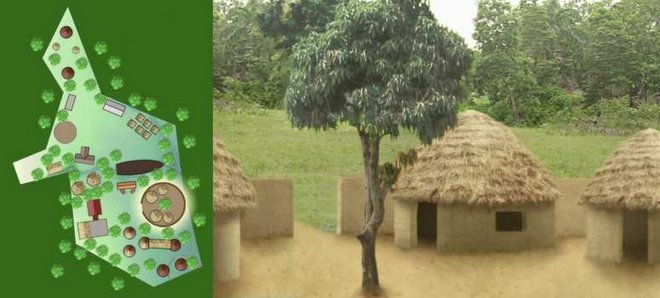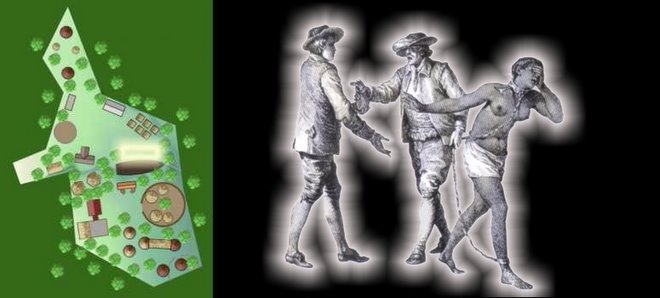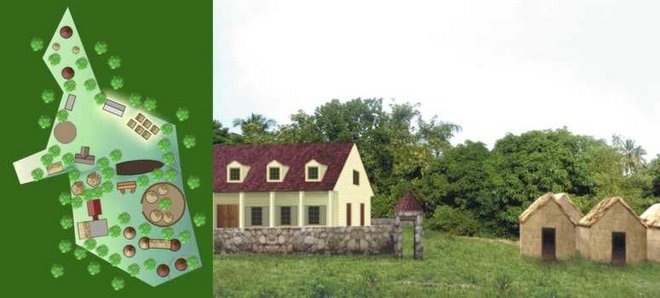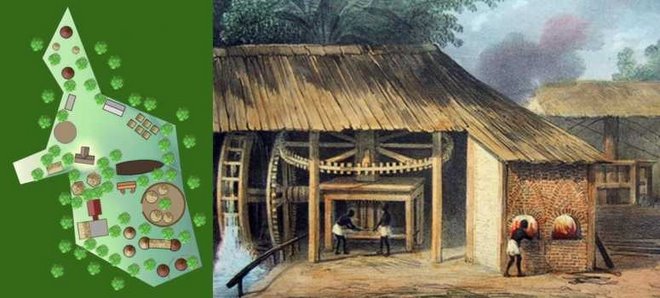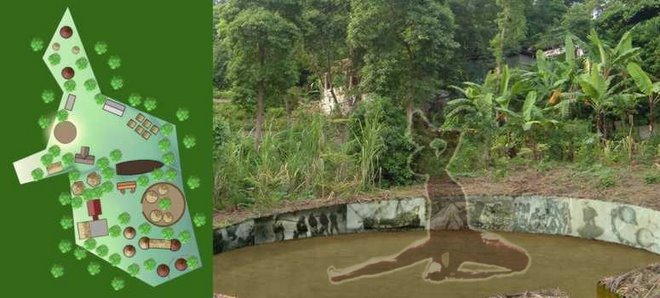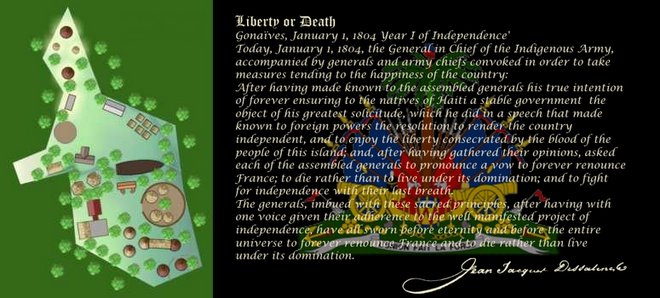Memory Village
Visitors are invited to relive, actively, the reality of the life and experiences of: Africans, slaves and revolted free blacks in the Americas. This historical village includes 7 (seven) main sites:
Title 1: Preparation
Site: Initiation house
Activities: Personal and group preparations; both spiritual and physical.
Title 2: Ancestors
Site : America-Europe-Africa houses
Activities: Experience aspects of peaceful daily village life of the people of the Americas, village life of Europe during the Dark Ages and one of the African kingdoms before colonization.
Title 3: Slave Trade
Site: House of Slaves replica prison, slave ship, auction block
Activities: Relive the capture of Africans, conditions of the slave concentration camp waiting for shipment on a slave ship, the middle passage and the sale of slaves in chains in Kiskeya (one of the Taino names for the whole island) on the auction block.
Title 4: Slavery
Site: Sugar Plantation
Activities: Experience the daily conditions of master and slave on the plantation during the colonial era.
Title 5: "Mawon" or Run Aways
Site: Taino and African-Haitian encampment
Activities: Relive the hospitable reception by the remaining Tainos to the escaped "Mawon" from the plantations as well as the sharing of cultural and scientific knowledge between the Tainos and African-Haitians.
Title 6: Revolt
Site: Bwa Kayiman (name of original historical location)
Activities: Participate in a recreation of the sacred ceremony in order to commit to work for freedom and against all forms of domination and exploitation.
Title 7: Healing
Site: Nourishment and Meditation Houses
Activities: Enter each space to participate in a celebatory meal and then meditate and share in group form about the possible actions for change in order to bring healing.










